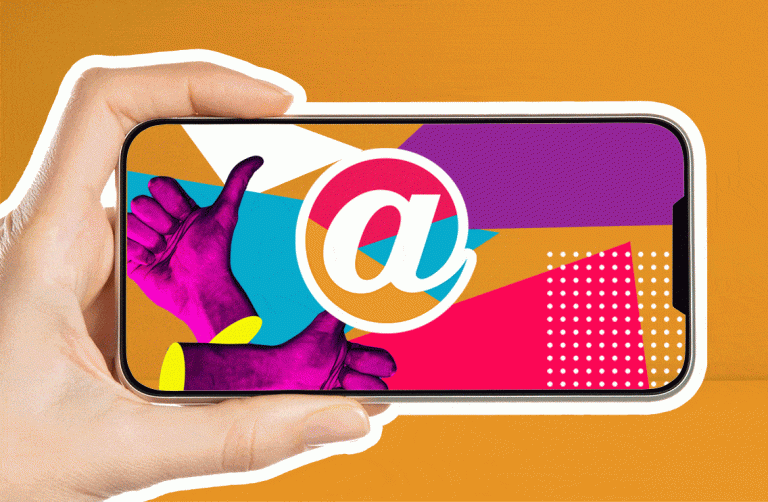While the world slowly picks itself up from lockdowns and slow economies, digital experiences are moving faster than ever. QR codes have experienced a renaissance due to its use in contact tracing and vaccination certificates. After shuttering physical stores, more brands have now moved online and strengthened their e-commerce presence. App and online based delivery is now a must for F&B. It is now very important for brands to look out for more immersive ways to engage consumers online. As a result, brands are discovering another weapon in their digital arsenal: Augmented reality. What exactly is augmented reality or AR? What does it mean for your brand? And more importantly, how can it enrich your consumers’ experience?

Use AR to address consumers concerns while giving an immersive experience
What is AR?
In a nutshell, AR enhances the real world with computer-generated experiences. AR blends digital objects seamlessly over the physical world. It allows users to interact with these digital assets. These can range from static 2D, and 3D graphics to more complex scripted interactions. Advancements in hardware and software technologies have made AR even more accessible. Chances are, the phone you have in your hand right now contains the key elements for accessing and even creating AR. As long as you have an internet connection and a phone camera, you’re all set!
Tools to create AR are now more readily available than ever. Adobe as a brand, needs no introduction. Adobe Aero marks its latest foray into AR. It enables the creation of AR experiences, combine it with 3D or even animation. Full integration via the cloud means inter-compatibility between the more “traditional” Adobe software. More importantly, it enables the sharing of these experiences to marketers for ease of collaboration and approvals.
Facebook and Instagram have also released Spark AR, an open platform that allows the creation of social AR experiences. With a robust community of AR enthusiasts and constant improvements on the software, Spark AR is the largest platform for mobile AR. From filters to quizzes, it combines the reach of social media and AR technology to create interactive content that is instantly shareable. And any marketer worth their salt knows that interactive content results in higher engagement.

Augment your brand’s reality with AR through social media
Your consumers, the pandemic and augmented reality
AR is immersive. A good example of AR’s popularity with consumers is the wildly successful Pokemon Go. It turned the whole world into a global Pokemon playground. How many of your walks have turned into impromptu Pokemon-catching sessions? Mine have been too many to count! More importantly, it exposed the world to the potential of AR. In effect, its success birthed a whole slew of AR-powered games. And brands have begun to take serious note.
As a result of lockdowns and physical store closures, IBM reports that the move to digital shopping has accelerated by 5 years. And even with stores reopening, overcrowding, hygiene and safe distancing are still key concerns among consumers. In a Nielsen survey, 51% of consumers worldwide said that they are willing to use AR to assess products. Because of this, more and more brands are turning to AR as a solution to help consumers in their purchase decisions.

Give your brand’s storytelling another dimension with AR
Brands and augmented reality
More and more marketers have heard their consumers, and we see more brands turn to AR. Brands like beauty and cosmetics giant Sephora is no stranger to pushing the needle on digital retail. With AR, Sephora lets consumers “try-on” different shades of make-up. All with a simple tap. This effectively solves the hygiene factor and makes for an interactive buying experience. Singapore’s homegrown furniture brand Castlery for instance, enabled consumers to virtually place furniture in their own homes. They paired this with a smooth and well-considered user interface and experience, seamlessly allowing consumers to add the types of furniture they “tried on” into their shopping carts.
AR’s presence is also keenly felt in social media. While providing hours and hours of fun and entertainment, brands have also tapped on branded filters, whether to increase brand awareness or even push trial and sales. Kylie Jenner released an Instagram filter that allowed the virtual try-on of her new line of lipsticks. Asset management house Schroders have often paired their yearly CNY ang bao packets with AR-powered experiences. Whether it’s a cheeky AR monkey or watching flowers bloom before your eyes, AR provided Schroders with a branded experience that merged print and digital seamlessly.
Augmented storytelling
AR doesn’t only work for e-commerce and online. The immersive nature of AR means that physical experiences can take on new richness and depth – ripe for storytelling. Experiences at physical locations such as showrooms, exhibits and even retail stores, can be augmented by overlaying digital assets through AR. Consider augmenting physical displays or installations with digital rich media assets for an educational and informative experience. The National Museum of Singapore did just this. In an art exhibit, they leveraged on AR to transform artworks into 3D animations. Visitors can immerse themselves into the story and the artworks’ world – literally bringing artworks to life.
Products too can come to life using AR. Glenlivet elevated the whiskey experience by having the hologram of a master distiller guide consumers through tasting notes. They carefully considered their TA’s consumer journey and identified (quite tastefully heh!) where AR might best serve to augment the experience. Similarly, brands should always keep their target audience, their journeys and the story they want to tell, well in mind when considering AR experiences. At the end of the day, AR should be seen as a medium to enrich storytelling. Not a means by itself.
What story should your brand tell? What experiences do you want your consumers to experience? Whatever they may be, augment your brand’s reality and your consumer’s experience by storytelling through AR. It will surely be a powerful tool in building a more immersive brand for the digital age.







